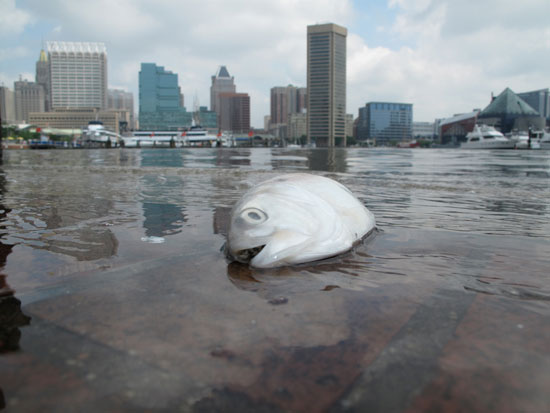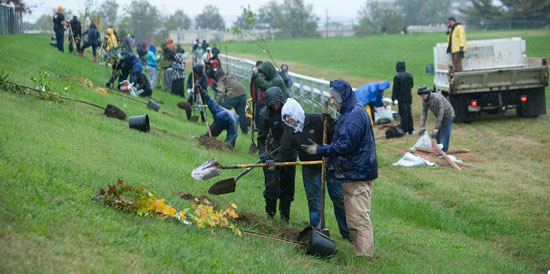Water quality report card gives Baltimore Harbor a failing grade
Trash, bacteria and nutrient pollution continued to plague Baltimore Harbor in 2011.
Impaired by trash, rated poor for nutrient pollution and listed as unsafe for human contact much of the time, Baltimore Harbor scored a failing grade on its most recent Healthy Harbor Report Card.

Image courtesy Waterfront Partnership of Baltimore
While community engagement in conservation is on the rise—volunteers have planted trees, picked up trash and even painted murals around storm drains to make a connection between streets and streams—algae blooms, dead zones and fish kills remain a problem for the urban watershed.
According to the Healthy Harbor Report Card, water quality in Baltimore Harbor did not improve in 2011, when spring and fall rains pushed pollutants into the water.
From a spring shower to a fall hurricane, the flow of pollutants into Baltimore Harbor is closely tied to regional rainfall. The amount of litter collected in the Harbor in 2011, for instance, spiked when water flow was at its highest after Tropical Storm Lee. Sewage overflows, too, were linked to large storms, when rainwater seeped into sewer pipes and pushed harmful bacteria into the Harbor.

Image courtesy Blue Water Baltimore/Flickr
To combat these problems, the non-profits behind the Healthy Harbor Report Card have engaged students and citizens in a mission to make the Harbor swimmable and fishable within the next decade. Blue Water Baltimore, for instance, has curbed stormwater runoff on school grounds and helped Clean Water Communities develop plans for cleaning and greening their neighborhoods. And the Waterfront Partnership of Baltimore has published a Healthy Harbor Plan to provide Baltimoreans with a roadmap for Harbor clean-up.
Learn more about the Healthy Harbor Report Card.

Comments
There are no comments.
Thank you!
Your comment has been received. Before it can be published, the comment will be reviewed by our team to ensure it adheres with our rules of engagement.
Back to recent stories